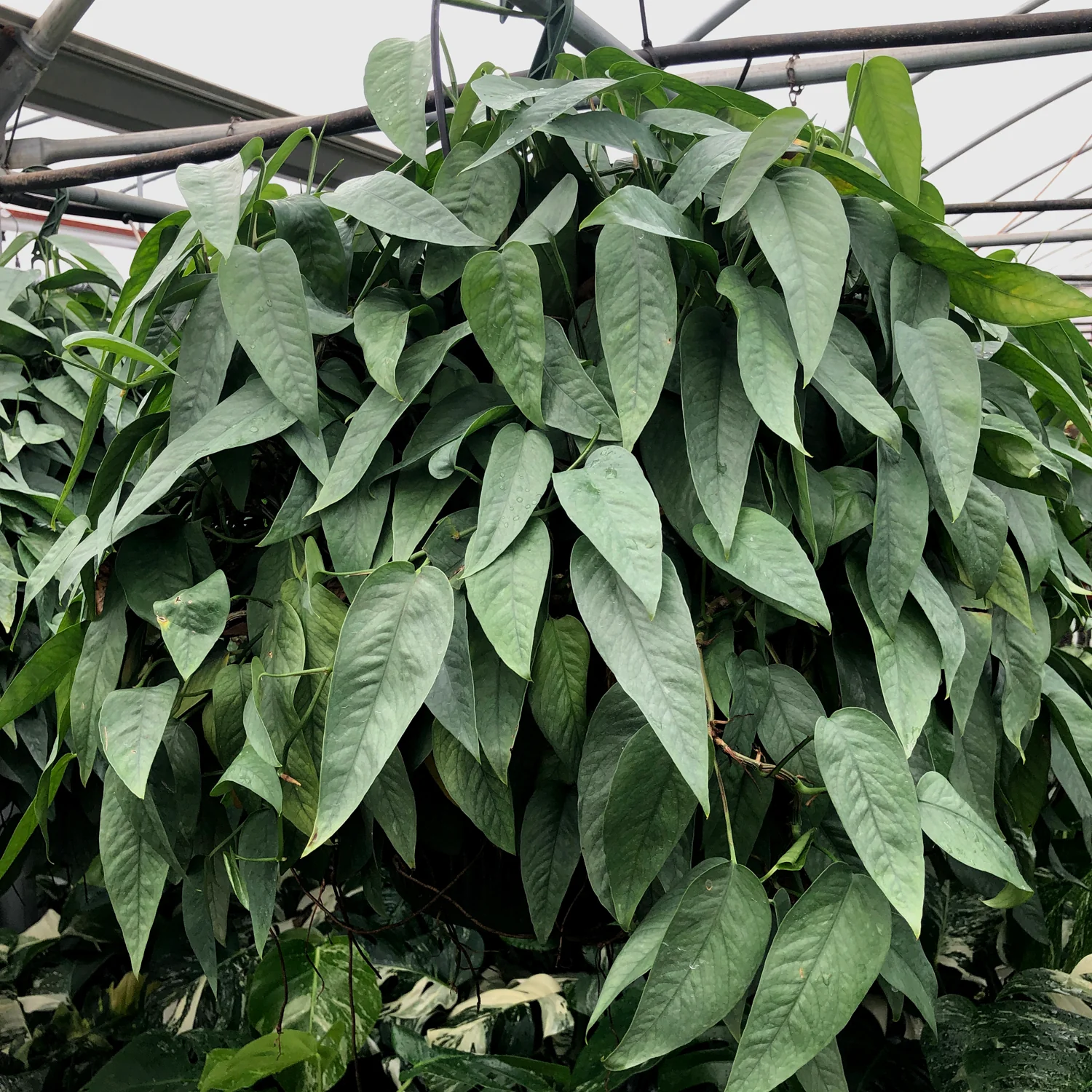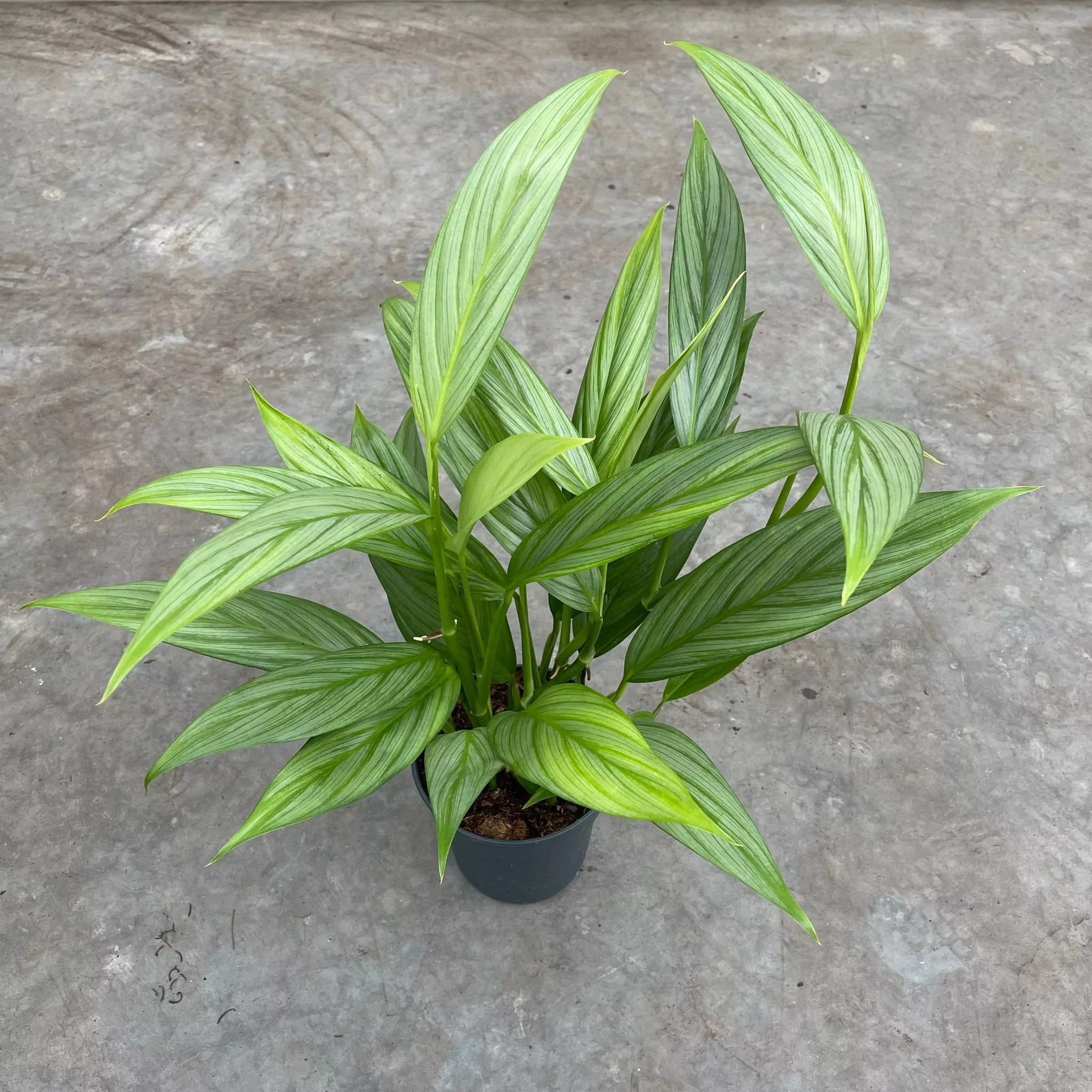The epipremnum, commonly known as pothos or devil’s ivy, is a popular houseplant known for its easy care, trailing vines, and variegated leaves. As one of the easiest houseplants to grow, the epipremnum is the perfect plant for beginners or anyone looking to add some greenery to their home without needing a green thumb. With the right care and conditions, this tropical foliage plant can provide años of enjoyment with its attractive features. Read on to learn the basics behind successfully growing a healthy, vibrant epipremnum plant.

Light Requirements
The epipremnum prefers bright, indirect light similar to that found in rainforests, its natural habitat.
Direct Sunlight
Avoid placing this plant in direct sun, which can scorch and yellow the leaves. The variegated varieties with white or yellow in the leaves are especially sensitive. Direct southern exposure should be avoided.
Bright Indirect Light
A northern or eastern window is ideal to provide the bright but indirect light this plant needs to thrive. Rotate the pot from time to time so all sides get equal lighting. If light levels are too low, you may notice sparse, limp foliage and leggy stems as the plant reaches for light.
Watering Needs
As a tropical plant, epipremnums like a decent amount of moisture and humidity similar to a rainforest environment. However, they are susceptible to problems if overwatered.
Watering Frequency
Water when the top inch or so of soil becomes dry. This may mean watering once weekly or slightly less in winter when growth slows. The potting mix should be kept evenly moist but not constantly soggy.
Drainage
Always use containers with bottom drainage holes and well-draining soil mixes, never heavy, dense ones that hold moisture. Allow excess moisture to drain fully after watering to prevent soggy soils that can lead to root rot due to lack of air circulation.

Soil Recommendations
Using the right potting mix will help provide the moisture retention and drainage this plant needs.
Potting Mixes
A general houseplant potting mix amended with some peat moss or coco coir to help retain humidity is ideal. Or, make your own mix using compost, peat moss or coco coir, and a small amount of perlite or bark for drainage.
Fertilizer
During the growing season from spring to summer, fertilizing monthly with a balanced liquid fertilizer helps nurture healthy foliage growth. Reduce or eliminate fertilizer over winter when plant growth naturally slows.
Temperature Needs
As a tropical plant, warm to high temperatures are preferred along with high humidity levels.
Ideal Temperature Ranges
This plant does best in average home temperatures between 60°F to 80°F. Cooler temperatures below 50°F can sometimes cause leaf damage if prolonged. Moving the plant to a warmer location usually remedies leaf damage that can occur in cooler temperatures.
Humidity
Misting the plant or using a pebble tray filled with water can help supplement humidity levels, especially when indoor heating is used. Higher humidity mimics this plant’s native humid, tropical habitat.
“Explore the Exceptional 2023 Epipremnum Variegata Collection: A Curated Selection of the Rarest and Most Unique Varieties Available.”

Pruning and Shaping
With its long trailing stems, pruning and shaping are needed to keep your epipremnum plant trained to its support or trellis and prevent it taking over a room.
Pruning Frequency
Prune as needed through the growing season to remove any damaged or unsightly growth and shape the plant by trimming long vines. Limit pruning over fall and winter.
Propagation
The easiest way to propagate pothos is by stem cuttings. Simply use a sharp, clean blade to cut a stem below a node. Place the cutting in water or moist potting mix until roots form. Once rooted, pot up into soil. The plant can also be propagated by plant division or air layering vines.
Common Issues
When provided with the proper care, pothos plants tend to be vigorous growers and quite resilient to pests and disease. But occasionally problems can still crop up.
Troubleshooting Yellowing Leaves
If leaves turn yellow, the most common culprits are overwatering, low light, or cold drafts. Check that plant soil has adequate drainage and allow to dry between waterings. Move plant away from drafty locations and into brighter light.
Preventing Pests
These plants are rarely bothered by insects aside from the occasional spider mites or mealybugs. Maintain vigor through proper care, prune off infested foliage, and wipe leaves down with a damp cloth to prevent pests from taking hold. Quarantine new plants before introducing to your existing collection.
With its cascading vines and variegated foliage, pothos make excellent display plants in hanging baskets or trained up supports like trellises and moss poles. Their versatility and ease of care makes epipremnums or devil’s ivy very popular houseplants to add visual interest and greenery to both homes and offices. Follow these pothos plant care tips to successfully grow this lovely tropical foliage plant.
Conclusion
Caring for an epipremnum or pothos plant is quite straightforward, making it an excellent option for beginner gardeners and busy households. Providing the proper potting mix, bright indirect light, warm temperatures, humidity, moisture, and drainage will allow this trailing tropical plant to thrive indoors. A vigorous grower, pothos is a great way to add beautiful cascading greenery and exotic botanical interest to any indoor space. With very little effort involved in meeting its basic needs, epipremnum houseplants can provide años of lush, leafy enjoyment.
See more 5 Must-Know Tips for Thriving Epipremnum Houseplants

